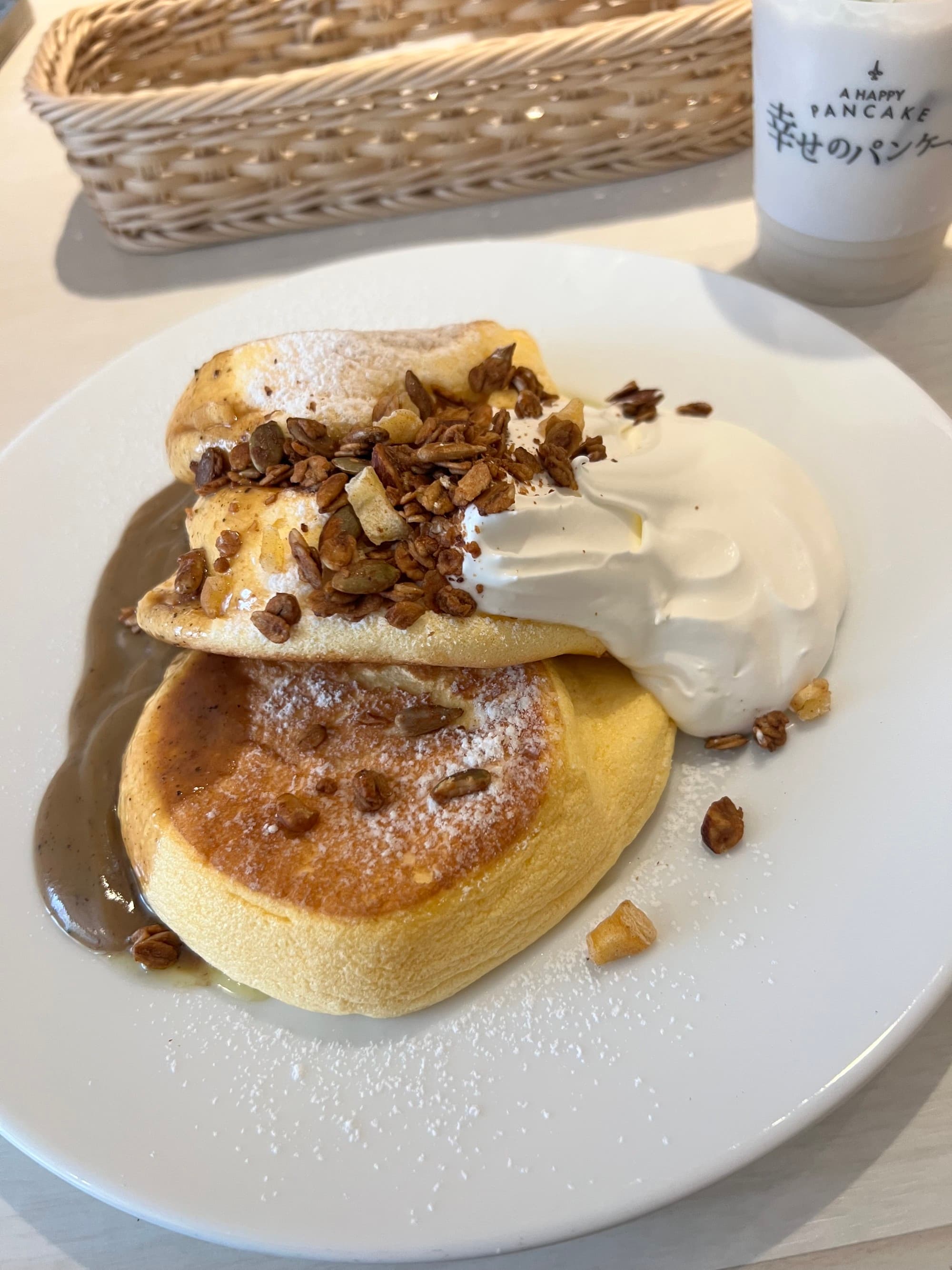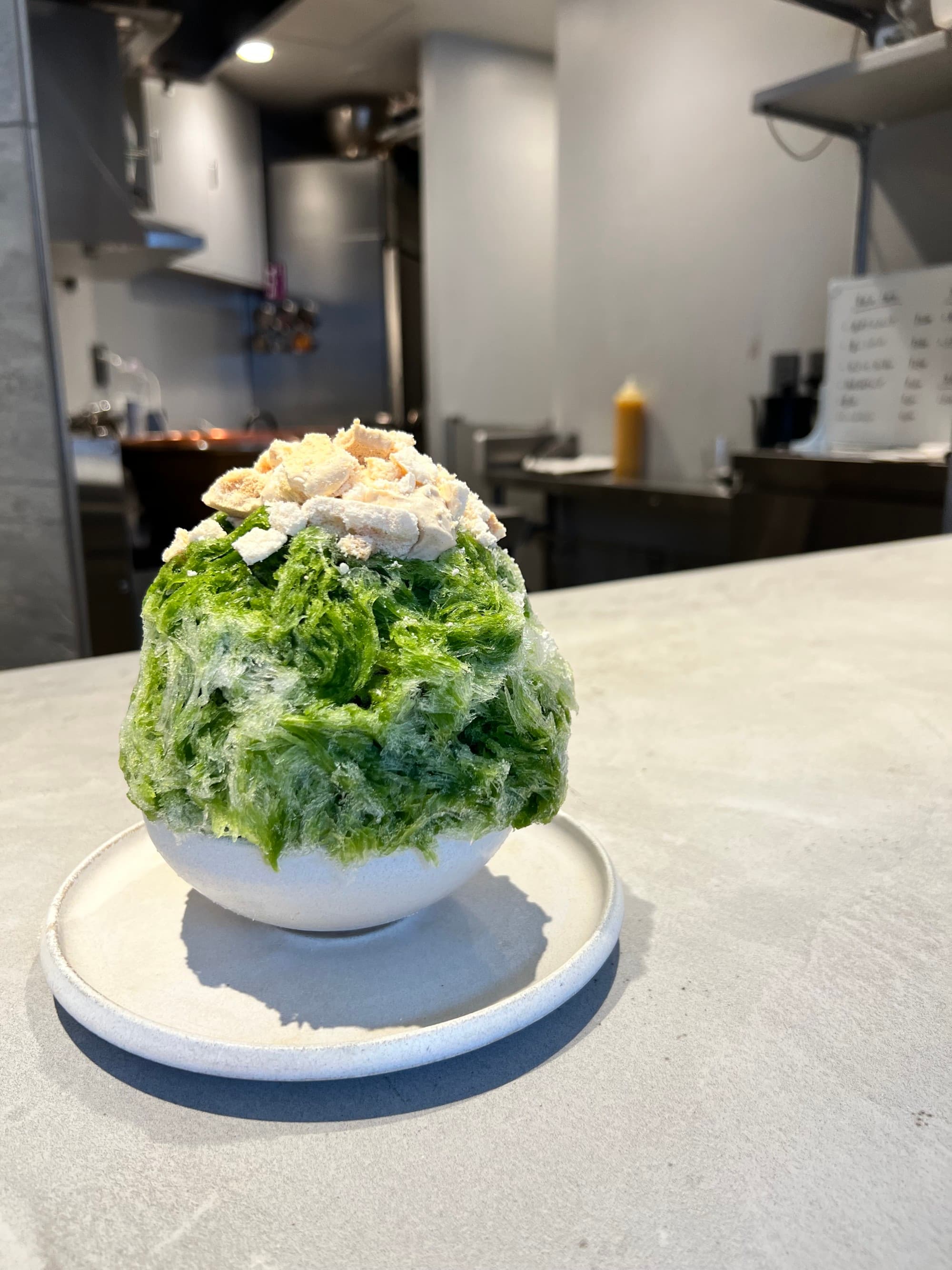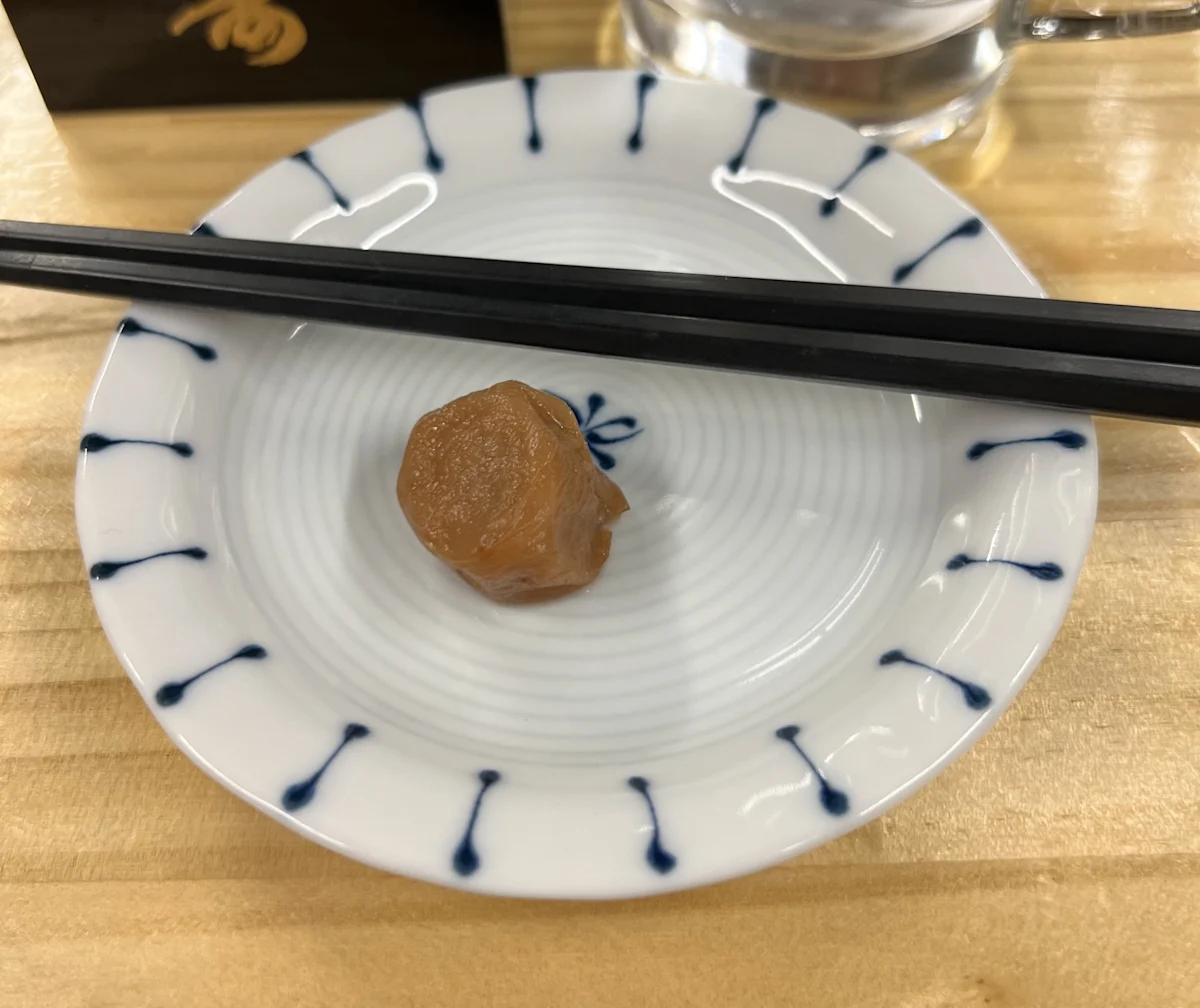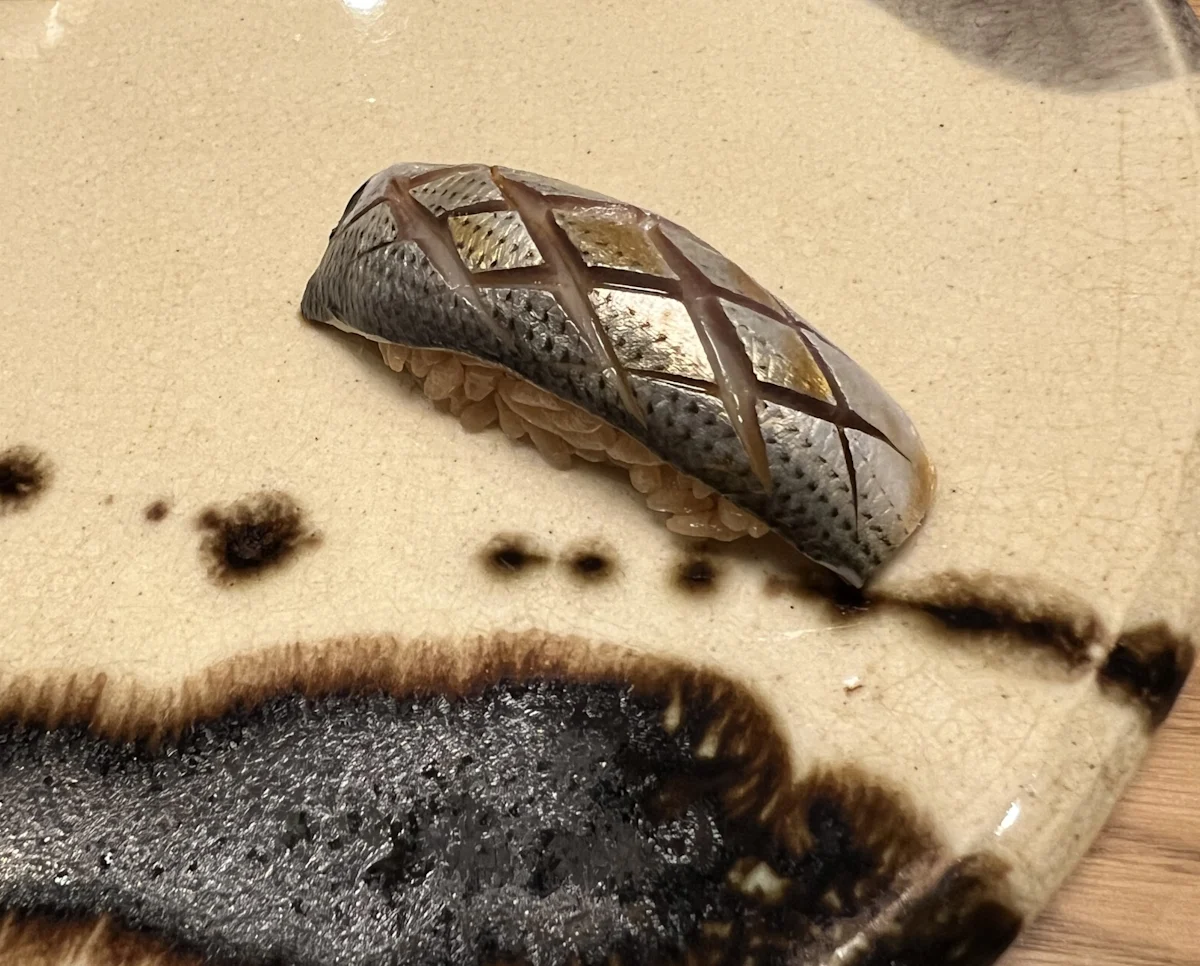
Curator’s statement
Michelin stars aside, Tokyo’s food scene is incredible. In addition to the mountains of money you can spend dining at the finest establishments in Ginza, we found that there are also plenty of quality cheap eat options pretty much anywhere in the city. Between countless ramen shops and udon joints to barbequed eel on a stick, waygu beef, and (of course) sushi, we did not find any trouble filling our stomachs; and neither will you. Let’s start by sharing the foods that we came across, and where we got them.
The Fora Difference
Book with Steven to access exclusive perks and experiences on your trip.
Killer perks
Free upgrades, spa credits and more—we got you
Personalized recs
Customized travel planning for your style
Insider knowledge
Expert advice from people who’ve actually been there
Where to stay
Unlock perks by contacting Steven to book your trip.
Ramen
What pretty much everyone thinks of when they think Japanese cuisine. I grew up eating the 15-cent version of instant ramen (shrimp and chicken flavors FTW), and no matter how fancy ramen gets these days, it still brings me back to childhood.
Tonkotsu ramen
Tonkotsu is a rich, pork bone-based broth (ton meaning pork, kotsu meaning bone) that originated in the Japanese city of Fukuoka (number 19 on the New York Time's 52 best places to go in 2023). We ended up having our share of tonkotsu at Ichiran, one of Japan’s most famous tonkotsu ramen joints. Review? It was solid. They’re open super late like most ramen spots are (if not 24/7) and, depending on where you are and what time it is, have a line. If you’re near an Ichiran and have a craving for hangover-preventing ramen, you won’t be disappointed. Also, Ichiran has gotten so big recently they’ve opened a shop in NYC. We understand if that turns you off. Honestly, we agree that the novelty of it all wears off when you can get the same brand so close to home. That’s all preference though!




Niboshi
Niboshi ramen is something special, and not for every palate. The broth is primarily made from sardines but can also be any other type of dried fish. The result is unlike something I’ve ever tasted before. Salty and fishy in the best of ways. I got mine at 8:30am for breakfast from Ramen Nagi (open 24/7), supposedly the king of Niboshi ramen in Shinjuku. Frantically order yours like I did from the vending machine style, Japanese only menu at the front. Advice? Use the pictures to guide you. Also, don’t knock breakfast fish noodle soup until you’ve tried it. I’d call it in my top 5 eating experiences in Japan for the money.
Chicken ramen
Yup, just like those childhood memories, chicken ramen has made its comeback in my head. This one we didn’t seek out particularly but was a part of a foodie bar crawl that we did in Ueno one night. It might have been the beer talking, but damn it was good. For the life of me I cannot remember where we got it from, but later I’ll share the tour we were on and can put you in touch with our host, Aki!




Ramen wrap-up
Obviously there are more types of ramen than the three I highlighted above. Japan is filled with ramen joints. In all reality you can’t go wrong. I found that there are the “best of the best” shops, which I tried my hardest to plan into the schedule, but if you find yourself with a craving, and those top-notch joints are not a realistic distance away, you won’t be disappointed asking a local for their recommendations. I found that if you approach them quietly and with respect, the Japanese are some of the friendliest, most helpful culture of people I’ve met.
Gyukatsu
Gyukatsu is one of those special Japanese eating experiences that you rarely find in America. We stumbled on the concept of breading and flash frying a beef cutlet and serving it still raw on the inside during our extensive foodie research and just couldn’t pass up the opportunity to try it. The basically raw breaded steak is served pre-cut accompanying a hot stone plate, cabbage slaw, special sauce, and a big bowl of rice. The hot stone is used to place each piece on and cook to your liking! We got to have this unique experience at Gyukatsu Motomura in Harajuku. To avoid the long lines, get there right when they open. They have 13 locations around the city. You’re bound to be close to one.

Sushi (Omakase)
Chances are, if you’re dreaming about eating in Japan, you’re dreaming about sitting at a bamboo-colored bar watching a master at their craft artfully cut seafood, mold it perfectly over rice, brush it with soy, and place it in front of you with the expectation you eat it within five seconds and all in one bite. Okay your dreams may not be as intricate as mine, but hopefully you get the idea of an omakase sushi experience. From the familiar salmon, tuna (omg the tuna) and yellowtail through the truly wild shirako (cod or pufferfish sperm sack), an omakase takes you on a journey through the best that Japan has to offer. Our choice for omakase ended up landing us at Sushi Owana in Ebisu. True feedback? Solid. Fish was expectedly high quality and there were some unexpected surprises that we loved. Tbh though, if you want to spend USD $250-$400 on an experience, go ahead and ball out, chances are you’ll love it. But if you only have $100-$150 to spend on a nice night out, there are options that you have that don’t have to make you feel like you’re missing out on a life-changing meal. Let’s work together on finding what’s right for you!
Yakitori
Anything you can think of pierced through a skewer and grilled carefully above an open flame. For you basic eaters, chicken, beef, and pork are your go-to standards. Otherwise, if you’re a more adventurous eater, nothing is off limits. Our most unique yakitori dish was pig esophagus. We were upstairs at a crowded izakaya in Ueno on a foodie & nightlife tour when our guides handed us something and told us not to ask what it was… always a sketchy thing to tell someone right before they eat something. Review? I’d eat 100 pig esophagi before I took a stab at a pufferfish’s sperm sack again. If you're in the mood for everything Yakitori, I'd suggest Yakitori Imai in Shibuya or Daitoryo in Asakusa.

Udon
Although Tokyo itself is more known for soba, there are plenty of options for the thicker, tender-ier udon. Can you tell that I have a favorite? Udon, when its done right, is an incredible thing. For you basic eaters, think thicker, chewier spaghetti served hot, cold, in soup, dry, with meat, with veggies, etc. It’s truly versatile. In Tokyo, we had our first udon experience at Koshin An near the contemporary art museum. Its an unassuming shop with fantastic noodles. You won’t find this place on a “best of” list, but it doesn’t have to be written about to be good. Try them how we ate them, cold and served with sliced, perfectly cooked duck and a lemon wedge *chef’s kiss*.
Sugar coated strawberries (Ichigo Ame)
This is one of the foods that I had no idea was a thing until I started walking the streets. Specialty shops and street vendors take the highest quality berries and dip them in a vat of liquid sugar, leaving them out to harden before serving. They weirdly remind me of my childhood when my dad would serve us kids a bowl of strawberries doused with sugar on top. Hot take... I’m not the biggest fan. I like my strawberries the way they are. You can find them pretty much anywhere in the spring and early summer when they’re typically enjoyed.
Unagi (BBQ’d eel)
Unagi is heaven… plain and simple. The sticky sweet soy glaze lathered on a skewer of eel meat and grilled is a classic Japanese experience. You’ll find vendors serving them at markets as well as specialty shops like Unagi Obana, which supposedly delivers the best Unagi in the whole of Tokyo. We tried to make it, but our packed schedule didn’t allow for it. Instead, we had our Unagi fix at Tsukiji market, which we’ll talk about later on!
Tamago (Japanese rolled omelet)
When you have a perfectly rolled and cut bite of tamago for the first time, it’s something you’ll never forget. Tamago is the culmination of precisely fried eggs usually mixed with mirin, sugar, and dashi, rolled, and cut into rectangles. You might have had tamago on the end of a sushi buffet or at the end of a fancy omakase meal in the U.S., so I might be preaching to the choir, but for those who haven’t tried it yet, you’re in for a treat!
Tuna sashimi
“Uhh what?” was my reaction after almost every bite of tuna we ate in Japan. Talk about an experience eating something you thought you were so familiar with, only to find out you knew absolutely nothing about what it should really taste like. To simplify it, tuna is served raw in three forms, ranging from lean to ultra fatty. There’s akami (red meat lean tuna), chutoro (medium fatty) and otoro (fatty). Everyone has their preference. I’m such a goldilocks guy I like chutoro the best. It’s the perfect marriage of lean and fatty that gives it enough chew while still melting in your mouth. It’s pretty obvious given the Japanese’s obsession with tuna that you can find it pretty much anywhere. Personally, I found it best in the markets (with a guide showing us where the best was) and at our sushi omakase meal. For a really unique experience, you can set yourself up a sushi breakfast beginning at 6am in Toyosu market less than an hour after the chefs lay their claim to tuna from the auction taking place in the same building. Out of all the sushi that you can find in the states, the tuna in Japan definitely stood out as significantly better than we’ve had before.
Wagyu beef
It's no secret to us Americans that Japan is known for their high-quality beef. What I didn’t know, though, is that the Kobe beef that we always think of as crem-de-la-crem isn’t necessarily always the best choice, or worth the high price tag for that matter. You’ll find stalls at markets selling wagyu beef that you can pick out yourself and have them grill for you to order. You’ll also find places like Sumibi Yakiniku Nakahara and Ginza Koso who specialize in serving up different (raw and cooked) versions of the perfectly marbled meat. Our best and favorite Wagyu dishes came in the form of a private Wagyu dinner in east Tokyo hosted by Tei as a part of an AirBnb experience. Yes, it was as incredible as it sounds. More on that later.
Shaved Ice at Azuki to Kouri
Love fancy things? This one is for you. Azuki to Kouri is a small, seven-barstool shop making the most elegant shaved ice you’ve ever seen. Cue the Instagram pics because in addition to how good the creations are, they’re equally as picturesque. Expect a wide range of options including red bean, matcha, caramelized baked shaved ice, amazonian cacao, etc. The flavors on the menu change with the seasons. You can make reservations seven days in advance on their website. We can include this in your itinerary for a refreshing and uplifting jolt to your day.
Souffle pancakes
The first time I experienced the phenomenon of Japanese souffle pancakes was in the Kensington Market district of Toronto. I’m not even a souffle or pancake guy so idk what compelled me to wait 45 minutes in line for these jiggly cylinders of heaven. Maybe it was the line itself that triggered an immense FOMO. Either way, I’m glad I did because I found myself talking about them back at home. I say all that to say that these tasty pancakes were a must try when we were planning out our foodie stops in Tokyo. Verdict? Just as solid as they were the first time. Fluffy, perfectly sweet, drizzled with whatever you want and topped with house whipped cream. We ended up eating at A Happy Pancake (four locations) in Ginza, but there are others like Flippers in Shibuya if that’s closer to you!
Daigaku Imo (Japanese candied sweet potato)
These treats I didn’t know about until we started seeing them sold in markets and by street vendors. It’s hard to describe the taste but think boiled yucca dripping with a sticky sesame molasses. I wanted to highlight these because of their uniqueness. The name literally translates to “college potato” because they became popularized in the early 1900s as a snack eaten on university campuses in Tokyo. The potato was cheap, and it sounds like the Japanese students back then were a lot like I was in college… flat broke.
Pickled plums
Speaking of unique. Man do these things pack a punch. They’re not for the faint of heart, but the Japanese seem to love them. For the most part, they’re used as a condiment for rice and alongside meat and fish to balance the flavors. Assuming this is all part of the umami experience that Japanese food is famous for delivering. Try eating one on its own for a taste you’ll want to quickly forget.
Honorable mention
Okonomiyaki, which is mostly known in Osaka is also plentiful in Tokyo. Layers of flat top seared noodles, cabbage, and egg, all topped with protein, scallions, sauce, and bonito flakes. You literally cannot go wrong.
Need to know
That’s a wrap on my first experience with Tokyo’s most iconic foods. The world's most populous city has an unlimited amount of options for you to dive into head first. You're bound to come across something you've never tasted before. My advice is to be open to trying something new and it might surprise you how much you like it. Happy Eating!
This trip report is part of our ongoing series on travel to Tokyo. In need of further inspiration? Check out Graeson Conroy’s guide, Best Places in Tokyo.

Travel Advisor
Steven Lawrence

Get in touch with Steven
Did you like this guide? Reach out to customize and book your own experience. Or, just to chat about travel in general.
You can expect a response from Steven within 1–2 business days. You’ll also be subscribed to our traveler newsletter (you can unsubscribe at any time).